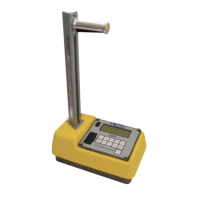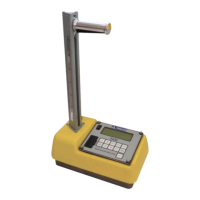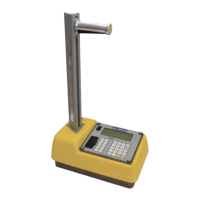Since protons and neutrons are clustered together in the nucleus, the
mass of an atom is concentrated in the nucleus. The atom shown in
Figure A-1 has two protons and two neutrons; therefore, it is a
helium atom. The atomic weight of an atom is the sum of the
number of protons and the number of neutrons.
RADIATION TERMINOLOGY
The curie, defined as the quantity of radioactive material giving 3.7
×
10
10
disintegrations per second, is equal to the number of
disintegrations/second of one gram of radium-226. Note that the
source used in the 3430 is small, with quantities expressed in
millicurie (mCi). The SI unit of radiation is the becquerel (Bq). A
becquerel equals one disintegration per second. Therefore, one curie
equals 3.7 × 10
10
Bq.
The rad, or radiation absorbed dose, is the unit of absorbed dose
equal to 0.01 joules/kg in any medium. To account for the effect of
various types of radiation on biological tissue, the roentgen
equivalent man (rem), or, more appropriate for Troxler operators,
the millirem is used when measuring radiation dose. The unit rem is
derived by multiplying the radiation absorbed dose (rad) by a
quality factor (QF). One rad is equal to the exposure of one rem of
photon radiation. For example, the average neutron energy of an
americium-241:beryllium source is approximately 4.5 MeV. The
quality factor (QF) for this radiation is about 10. The absorbed dose
of 1 rad of neutron radiation gives a dose equivalent (absorbed dose
×
QF) of 10 rem (0.1 Sv).
RADIATION THEORY
Radioactivity is the spontaneous breakdown of unstable nuclei
(radioisotopes) with the resulting emission of radiation. The strength
of radioactive material is measured by its activity, or rate of decay.
This activity decreases with time. The length of time it takes a given
amount of radioactive material to decay to half of its original
strength is referred to as the half-life. The half-life of cesium-137 is
30 years, while that of americium-241 is 432 years. Californium-
252 has a half-life of 2.6 years.

